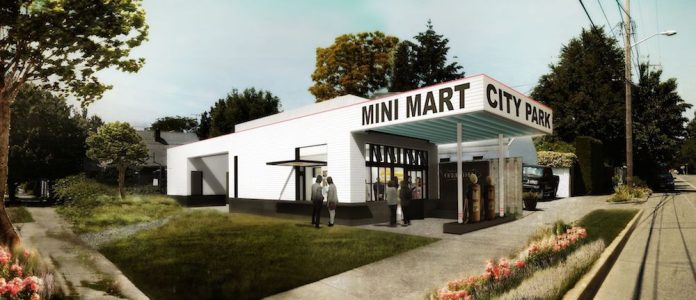At 6525 Ellis Avenue in Georgetown a typical summer block party is in full swing. The street, closed to traffic, bustles with people standing in the shade of tents and leafy trees. A barbecue grill sizzles with hot dogs and hamburger patties. Children chase past, glistening with sunscreen and sweat.
But the scene gets much less typical when you take in the massive mound of dirt behind the celebration. Fenced in by chain link and a yellow “Do Not Enter” banner, the dirt displays another side of this charming, family-friendly neighborhood: the industrial past and its toxic legacy.
The site of the future Mini Mart City Park was once an abandoned gas station. The earth beneath it was saturated with chemicals; environmental review declared it as a brownfield site, necessitating a long and arduous clean up process.
Today, however, the lot isn’t empty and the dirt is no longer toxic. A musician stands on top of the mound with an electric guitar and saxophone beside him. In defiance of the grime and heat, he wears a jaunty cream-colored suit. As he lifts the saxophone toward the sun, his notes spill over the block party where the curious people listen, stare, and chat about the land’s future.
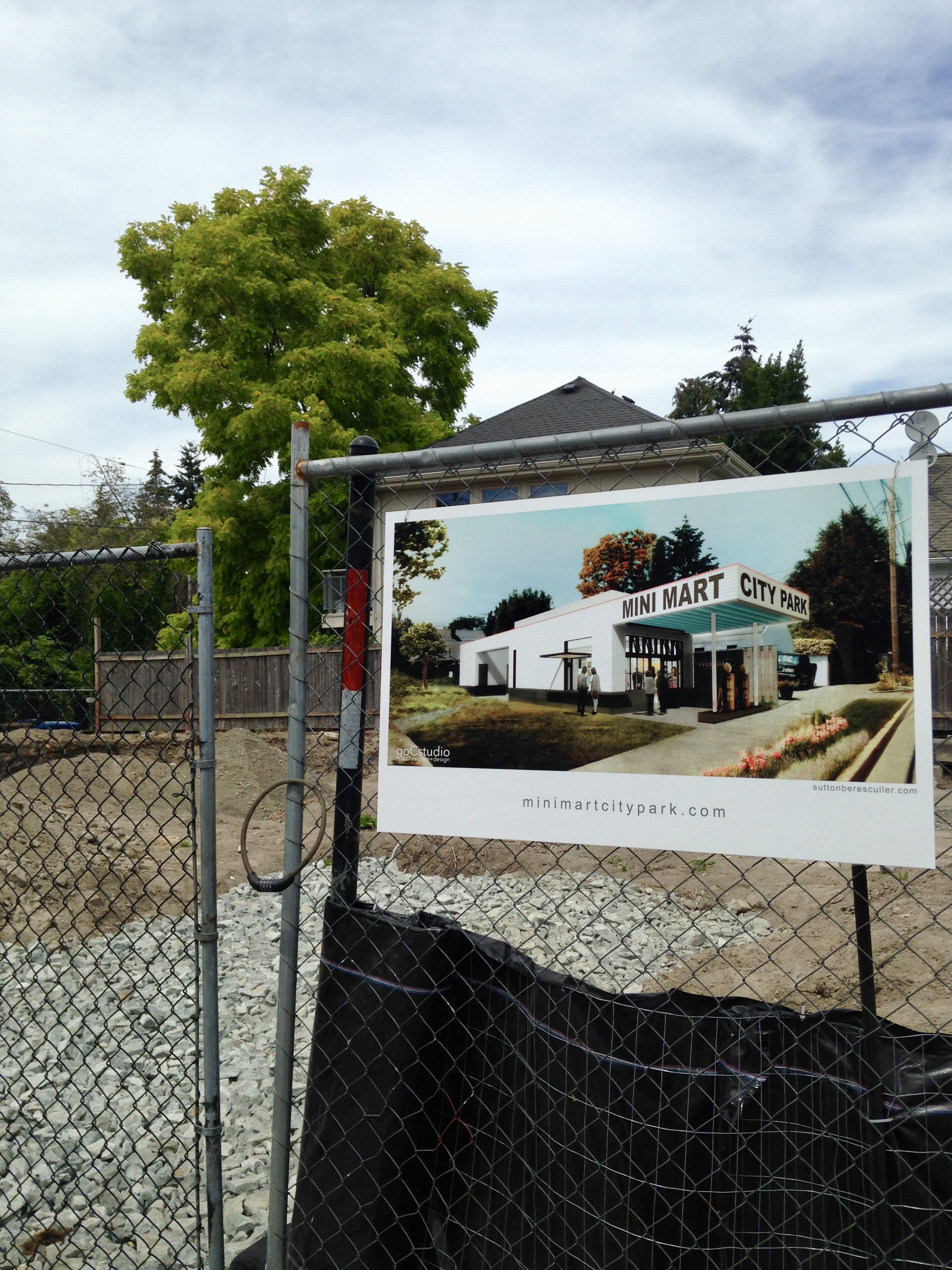
The scene of Mini Mart City Park’s groundbreaking ceremony is more than a little surreal, which is exactly the point. SuttonBeresCuller, the trio of artists who have nurtured the park, have always dared to see this bleak site as a place where creativity and community could one day thrive. Despite having endured a decade of setbacks and complications, they are now poised to complete their vision. By next summer, the transformation of the former service station into a thriving community park, complete with a flexible community gathering space envisioned as center for the arts, education, and environmental justice, should be a reality.
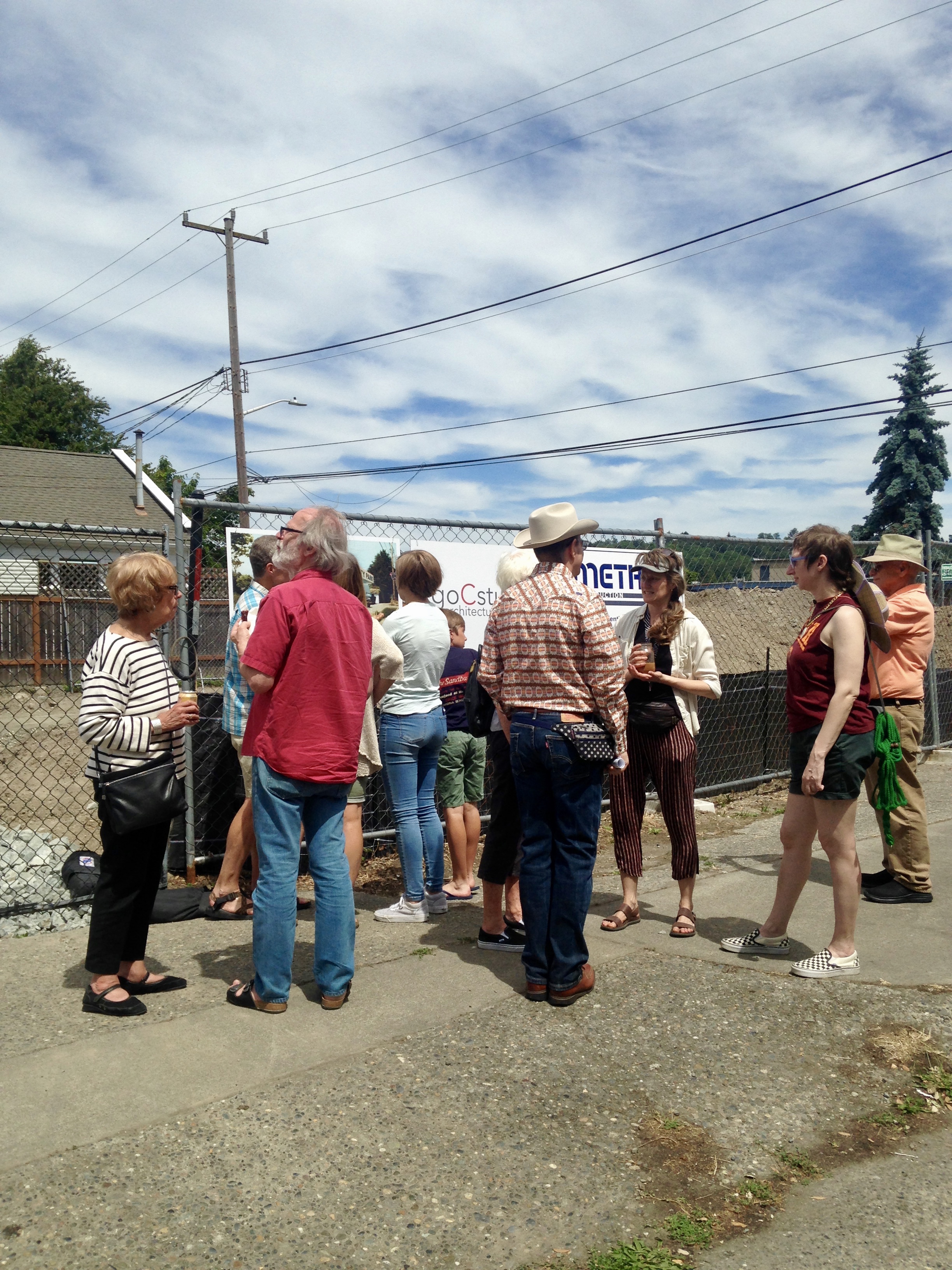
“Mini Mart City Park has a long origin story,” John Sutton said. “We thought it would be a quick temporary project, but it ballooned into a much larger project.”
The idea for the transformation of a derelict gas station in a community park had already been with the artists for years when they first acquired the land in 2008; however, over time, both the project’s concept and goals evolved in the face of adversity. “The first things we proposed are not what’s happening today,” says Sutton. Preliminary ideas included saving and repurposing the original structure, and even submerging part of the building in a mound intended to be reminiscent of the mounds used by the Duwamish people along banks of the nearby river, as well as the mound of dirt that covers the toxic waste buried beneath Gas Works Park.
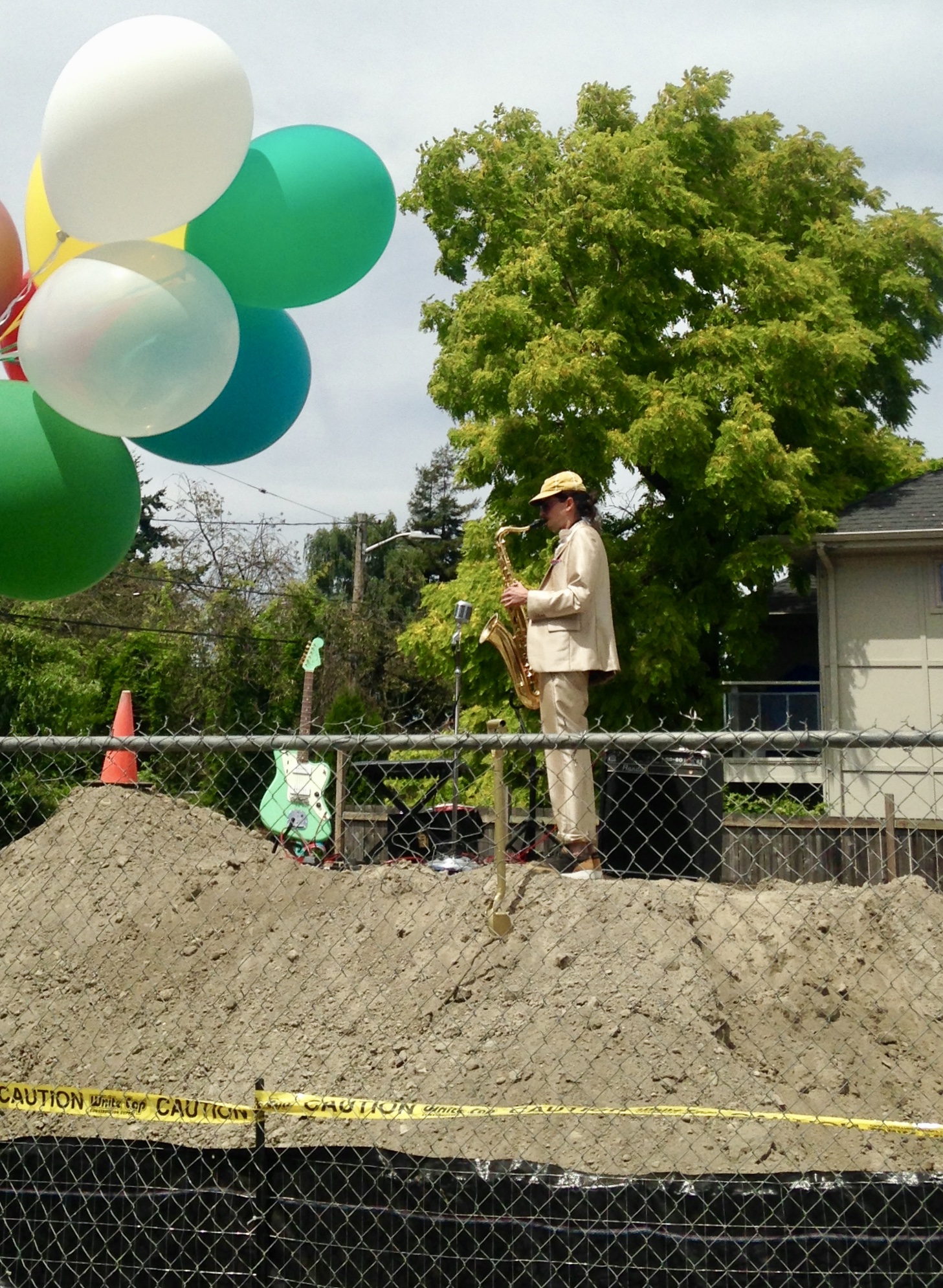
But those plans were halted once it was discovered that challenges presented by the site were greater than anticipated. “We discovered that Boeing had stored jet fuel secretly on the property during WWII that was more toxic than the other contamination,” Sutton said. “And we wanted to repurpose the original building, but the wood had lead based paint and the whole thing was full of asbestos. The concept wasn’t viable.”
With early concepts scrapped, SuttonBeresCuller entered into conversation with the Georgetown Community Council and began to adapt their plans for the site.
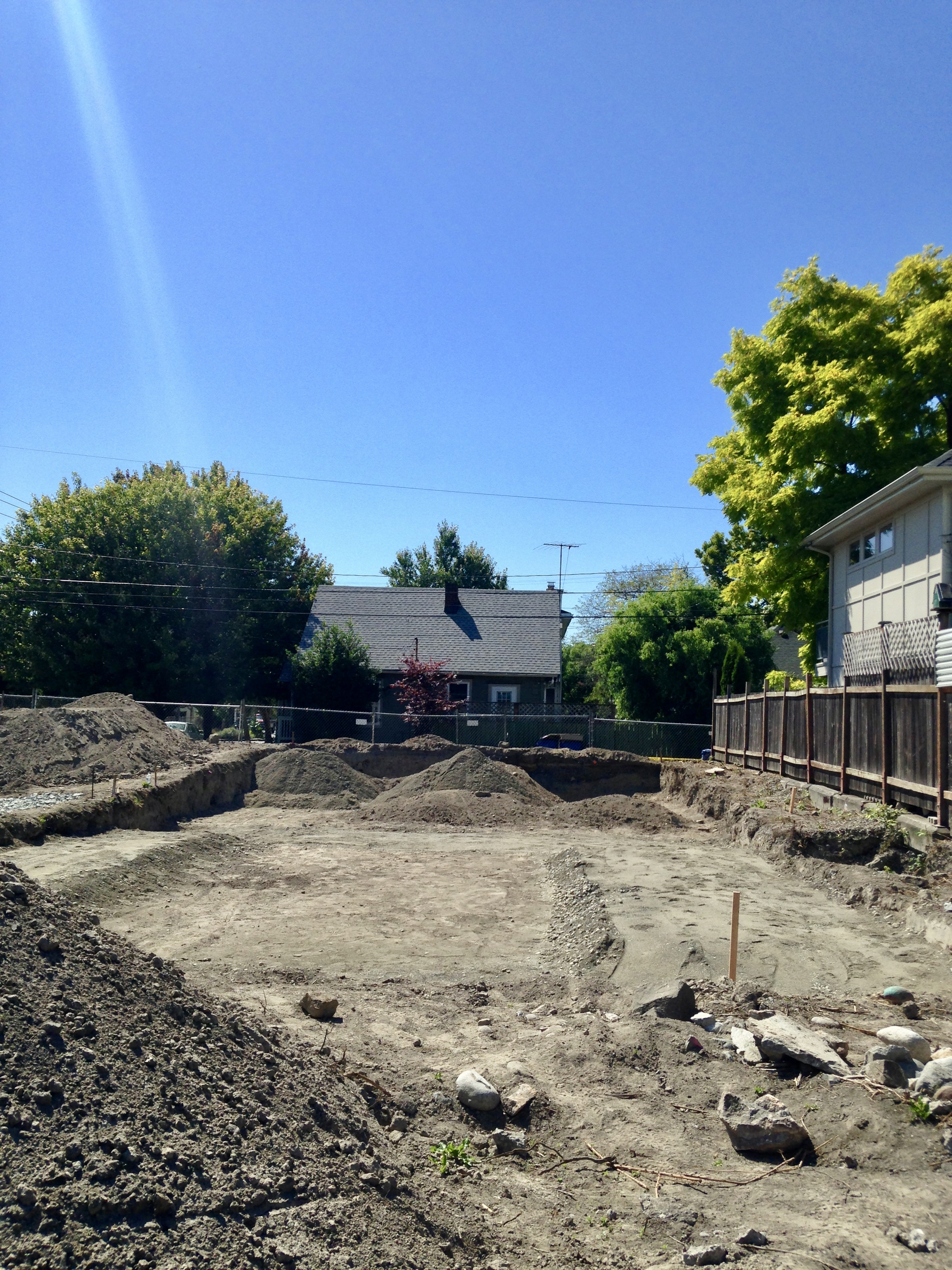
“When the community requests came in they were not necessarily about the park itself, but the structure,” Sutton said. “The biggest need of the community was to have a community gathering space. There is no community center in Georgetown. Meeting space is available in the old City Hall, but not everyone has access to it.”
The question then became, “How do we build a meeting space? How do we [combine] building and art space?” Sutton said.
The answer lay in developing a “super flexible design, intended to serve many purposes.” The building, designed by the architecture and design firm goCstudio, is a recreation of the former service station that incorporates flexible features, such as sliding walls that open in summer and a roof deck patio, which will enable it to be used for multiple purposes at the same time. Additionally, just as the concept for the project has evolved over the years, the flexibility of the design will enable the park and building to evolve as well. “We want to be thoughtful about how the space can meet the needs of a community that is always in flux,” says Sutton. “But we are also trying to make a permanent cultural space. We are trying to put a stake in the ground to say this space will always be there for the community.”
About five years ago, SuttonBeresCuller founded the Mini Mart Park 501(c)3, a “small and scrappy organization,” which is in the midst of a capital campaign to fully fund the park. An innovative funding campaign selling “Not Non Toxic” cans of dirt, as well as support from funders such as 4Culture, Seattle Department of Neighborhoods, Seattle Office of Arts and Culture, Creative Capital, and more, have established a financial foundation, but more financial support is needed, primarily because construction costs in Seattle continue to rise.
There are other ways to contribute to the Mini Mart City Park’s success as well. Volunteers will be needed to with “some aspects of construction” of the park, and volunteer parties, some of which will be sponsored by the partner organization Sawhorse Revolution, are in the works. Additionally volunteers will be needed to spread the word about the park and eventually to help run and manage it. “We need to expand the board and get people who are interested in the arts, environment, and education involved,” Sutton said. “We are looking for support from all kinds of fronts.”
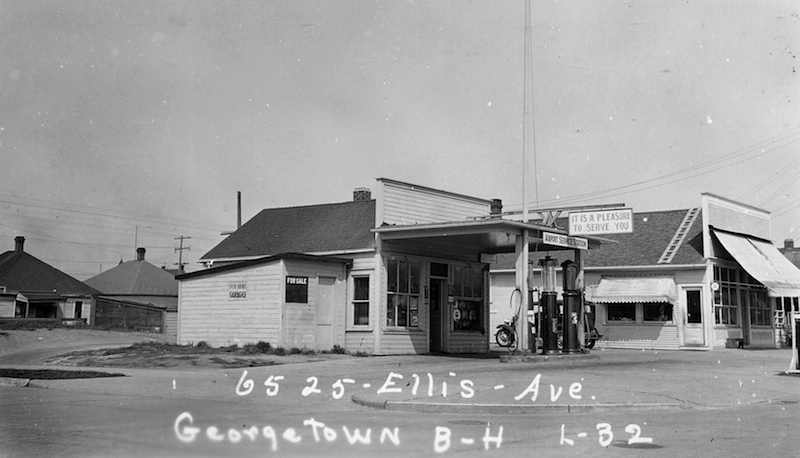
“Cleaning earth with art” is the proclaimed mission of Mini Mart City Park and it is an ambitious one. Beyond creating a new resource for Georgetown, SuttonBeresCuller hope to create a model for environmental restoration and justice that can be replicated.
“There are hundreds of thousands of small gas stations that do not have the capital to do this,” Sutton said. “These are small lots and cleaning them up is expensive so they tend to sit abandoned. We want to present a model for how these sites can be repurposed in an alternative way. Our hope is that what we are doing is sustainable as an ecological model, financial model, and [as a model] for community empowerment and ownership.”
“We hope it seeds something a little bigger than itself,” he added. “We’d love to see what other people are able to do with this model.”
Natalie Bicknell Argerious (she/her) is a reporter and podcast host at The Urbanist. She previously served as managing editor. A passionate urban explorer since childhood, she loves learning how to make cities more inclusive, vibrant, and environmentally resilient. You can often find her wandering around Seattle's Central District and Capitol Hill with her dogs and cat. Email her at natalie [at] theurbanist [dot] org.

